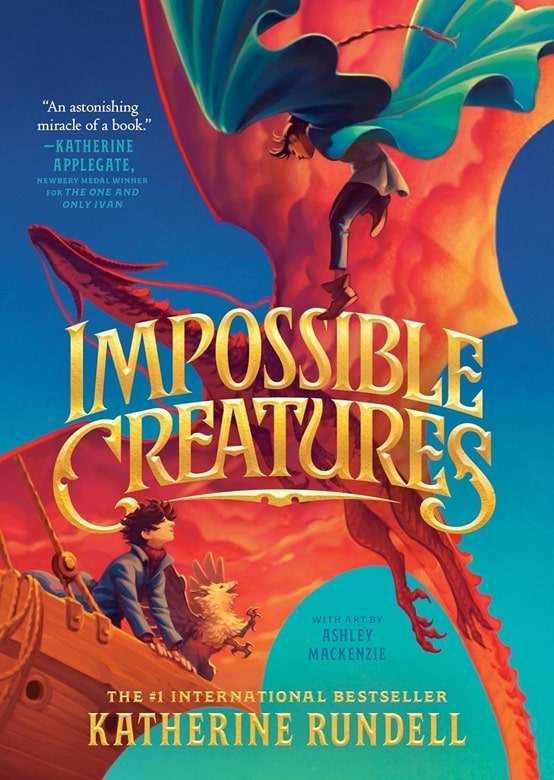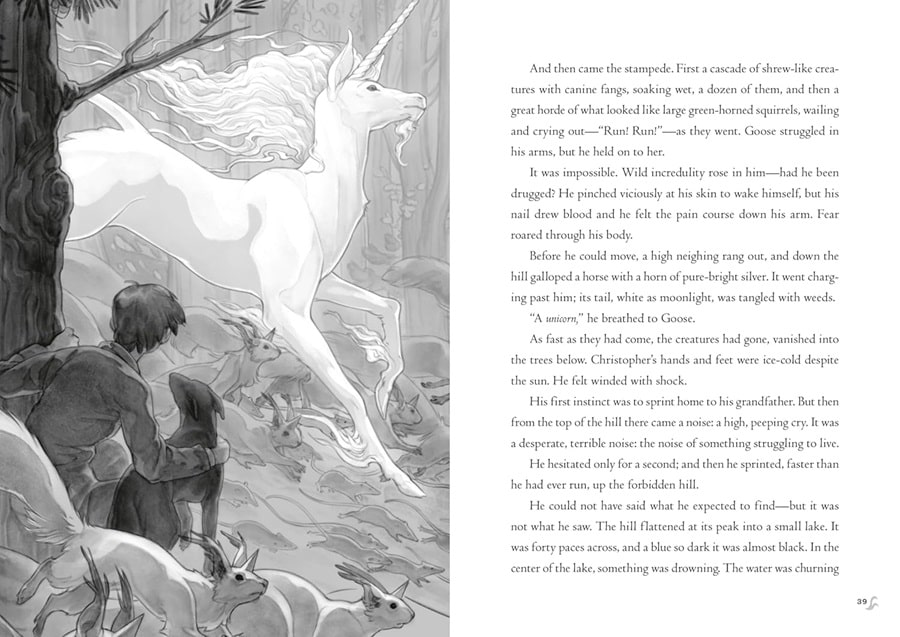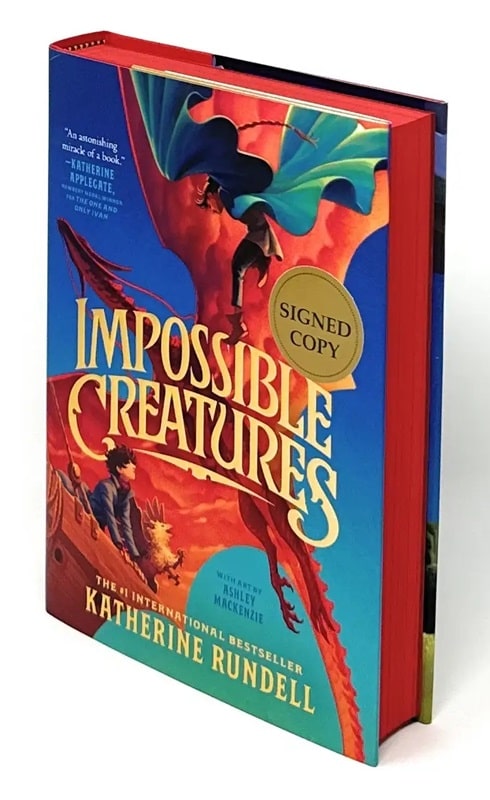A Very Fine YA Novel: Impossible Creatures by Katherine Rundell
 |
 |
Impossible Creatures (Knopf Books for Young Readers, September 10, 2024). Cover by Ashley Mackenzie
Katherine Rundell is a British writer who has been publishing YA novels for some time now, though I was unaware of her. Last year she published the first novel of a prospective series in the UK: Impossible Creatures. This became a big hit, and has now been published in the US. The book is quite good, fun to read, clever, also serious and quite moving, with real consequences to the characters.
There are two protagonists, Christopher Forester and Mal Arvorian. They are children of roughly the same age (early adolescence or just on the cusp of it, I think … somewhere between 10 and 13, I suppose.) Christopher lives in London, but has been sent to Scotland to stay with his grandfather, while his father is away on business. (His mother is dead.) Mal lives in an island in the Archipelago, with her great aunt. (Her parents are dead. Dead or absent parents, of course, being one of the most common situations in YA novels.) Both Christopher and Mal are special, of course. Animals of all sorts are attracted to Christopher, to an unusual degree. And Mal — Mal can fly (with the help of a magic cape.)
Interior pages from Impossible Creatures. Art by Ashley Mackenzie
The Archipelago? What’s that? It’s a group of islands, presumably in the North Atlantic, undetectable by anyone in the rest of the world, where all the “impossible creatures” of fantasy and folklore have retreated, along with a number of humans. It harbors the tree that is the source of the magic (or “glimourie”) that sustains these creatures, and it is also where the Immortal lives as the guardian of the tree. There are also places where, at the right time, one can pass from the normal parts of the Earth to the Archipelago, and vice versa.
As you can probably guess, Christopher’s grandfather lives near one of the places with a link to the Archipelago. He’s a guardian of that place, and Christopher’s father knows this, and, as part and parcel of his extreme protectiveness of Christopher since his wife’s death, he has thus told Christopher’s grandfather to forbid him to go up the hill on the grandfather’s property. Naturally Christoper disobeys — and then is chased by a stampede of strange creatures (you might say impossible!) such as a flying green horse and a unicorn.
One thing leads to another, and after a dive into the pool at the top of the hill he emerges with a griffin in his arms. His uncle finally reveals his secret role as guardian of the link to the Archipelago, and tells Christopher a bit about the Archipelago, and about its problems — the Immortal has abdicated, and the glimourie is diminishing, and magic animals are dying.
Impossible Creatures hardcover with sprayed edges
At roughly the same time, Mal is attacked by a man who is trying to kill her, for what reason she can’t imagine. She flees, but the murderer kills her great aunt. Mal ends up going through the link to Christopher’s uncle’s place — and finds Christopher, with the griffin — her griffin, in fact, and the very last living griffin. Christopher agrees to help her, and they return to the Archipelago, and their adventures really start, beginning with another encounter with the murderer, whom they escape by jumping off a cliff onto a boat. On the boat they meet its Captain, Fidens Nighthand, and his navigator, a ratatoska named Ratwin. After some persuading, Nighthand agrees to take them to the next meeting of the flying Senate of the Archipelago, hoping to convince the Senate to take action to solve the problem of the glimourie. But …
Well, really the book becomes an extended sequence of collecting plot coupons at this point. They do recruit another helper — a scientist named Irian Guinne, who is also concerned about the declining glimourie. It’s clear that somehow they must find the Immortal, or at least the tree which is the source of the glimourie. In the process they visit many more islands, and see many more wonderful and terrifying magical creatures, and run into additional stumbling blocks.
As I said — lots of plot coupons, and this seems a bit artificial at times. But there are real dangers, real peril to all the characters, and real losses. And the magic is interesting. The creatures come from all sorts of folk traditions — and some may even be inventions of the author. The resolution turns on a fairly guessable surprise, and the end is legitimately affecting. There is some romance (not for the children, though) and true sacrifices, and by the end I was quite moved.
This is a very fine new YA novel, and as I mentioned the beginning of a series. That said, the novel doesn’t leave us dangling — the primary questions it asks are resolved fairly, though there is definitely room for more stories. I enjoyed it quite a bit, and was indeed brought to tears in places, though I can’t rank this quite with the very best YA stories. But time, and further books, may alter my view.
Rich Horton’s last article for us was a review of Daughters of Chaos by Jen Fawkes. His website is Strange at Ecbatan. Rich has written over 200 articles for Black Gate, see them all here.

